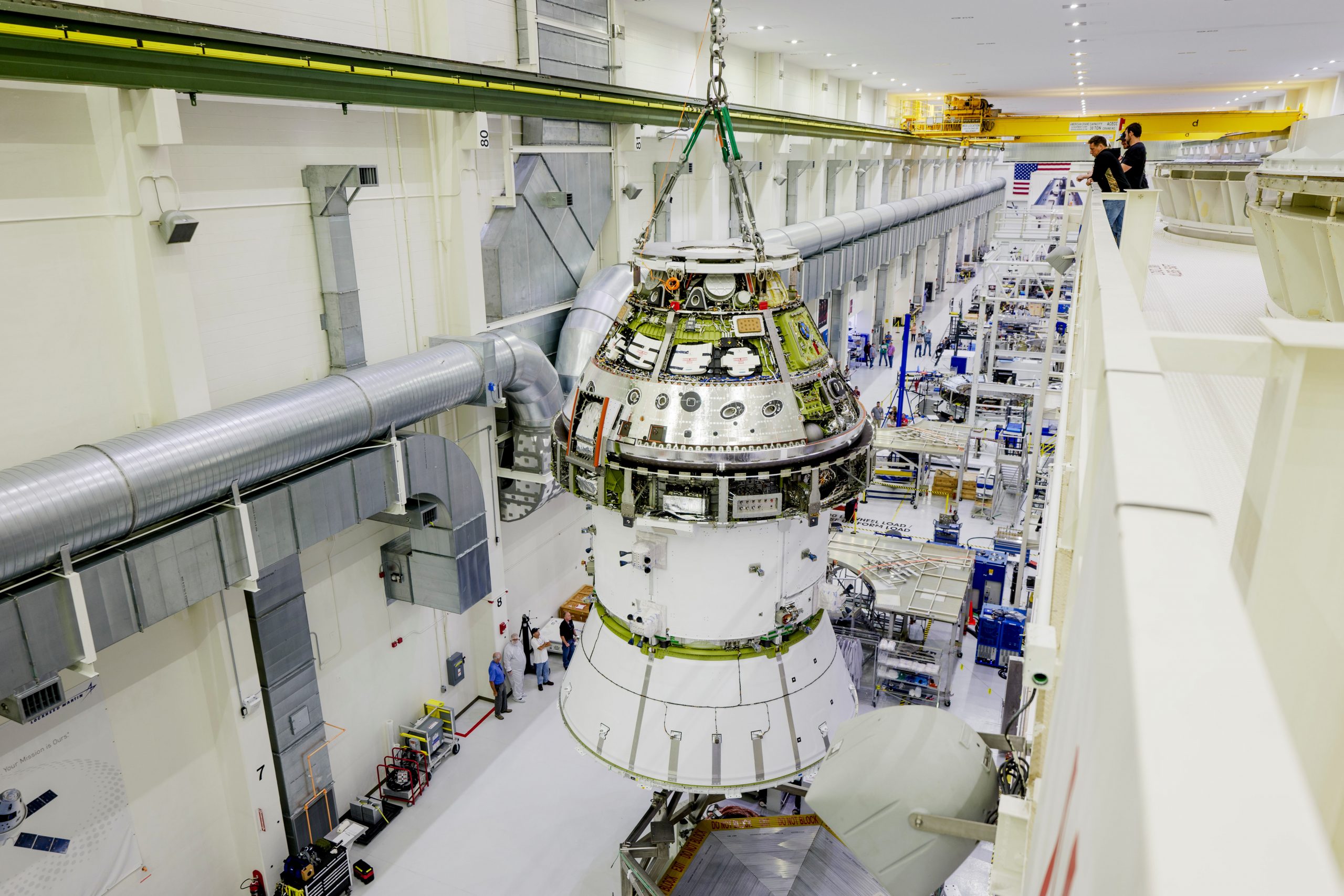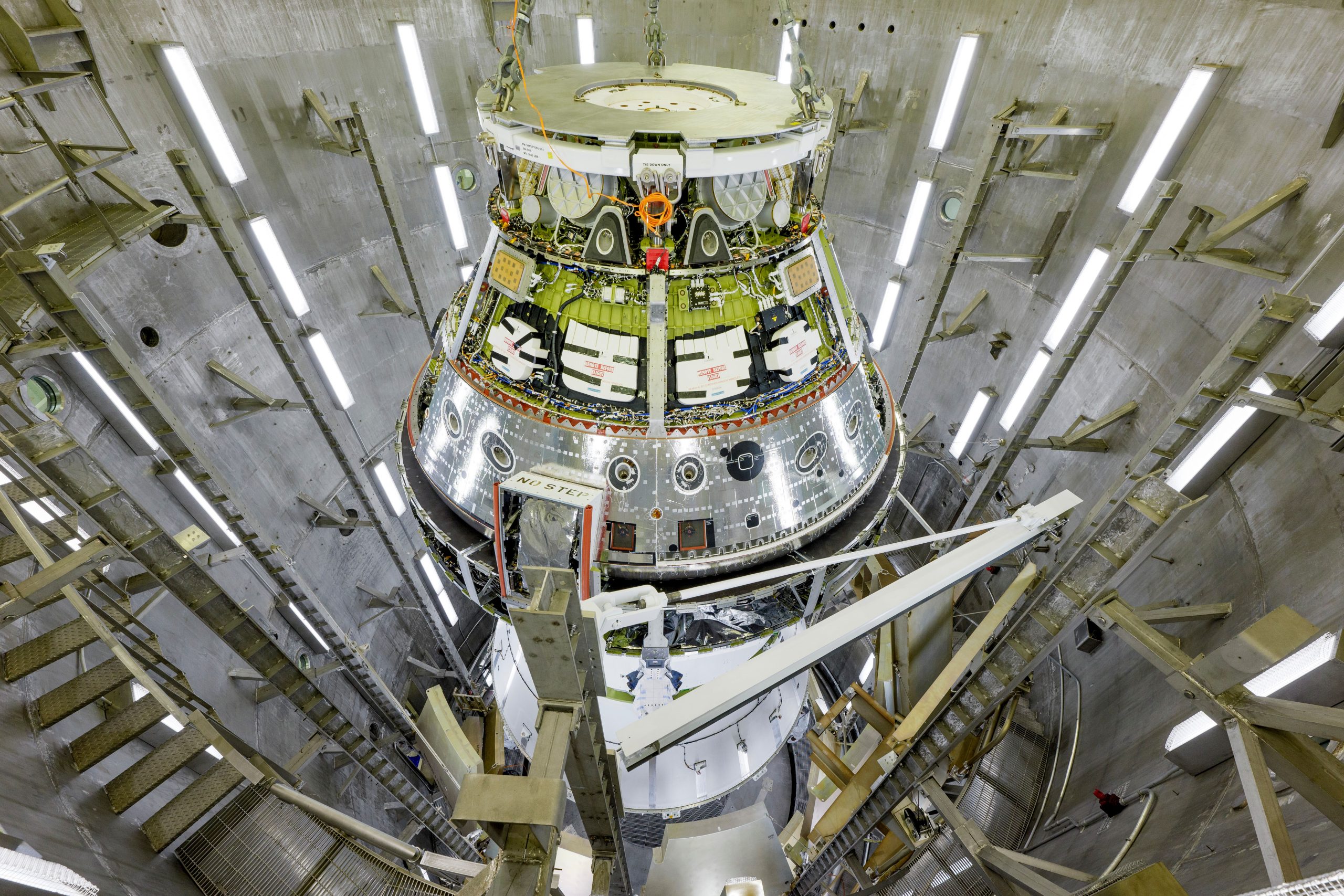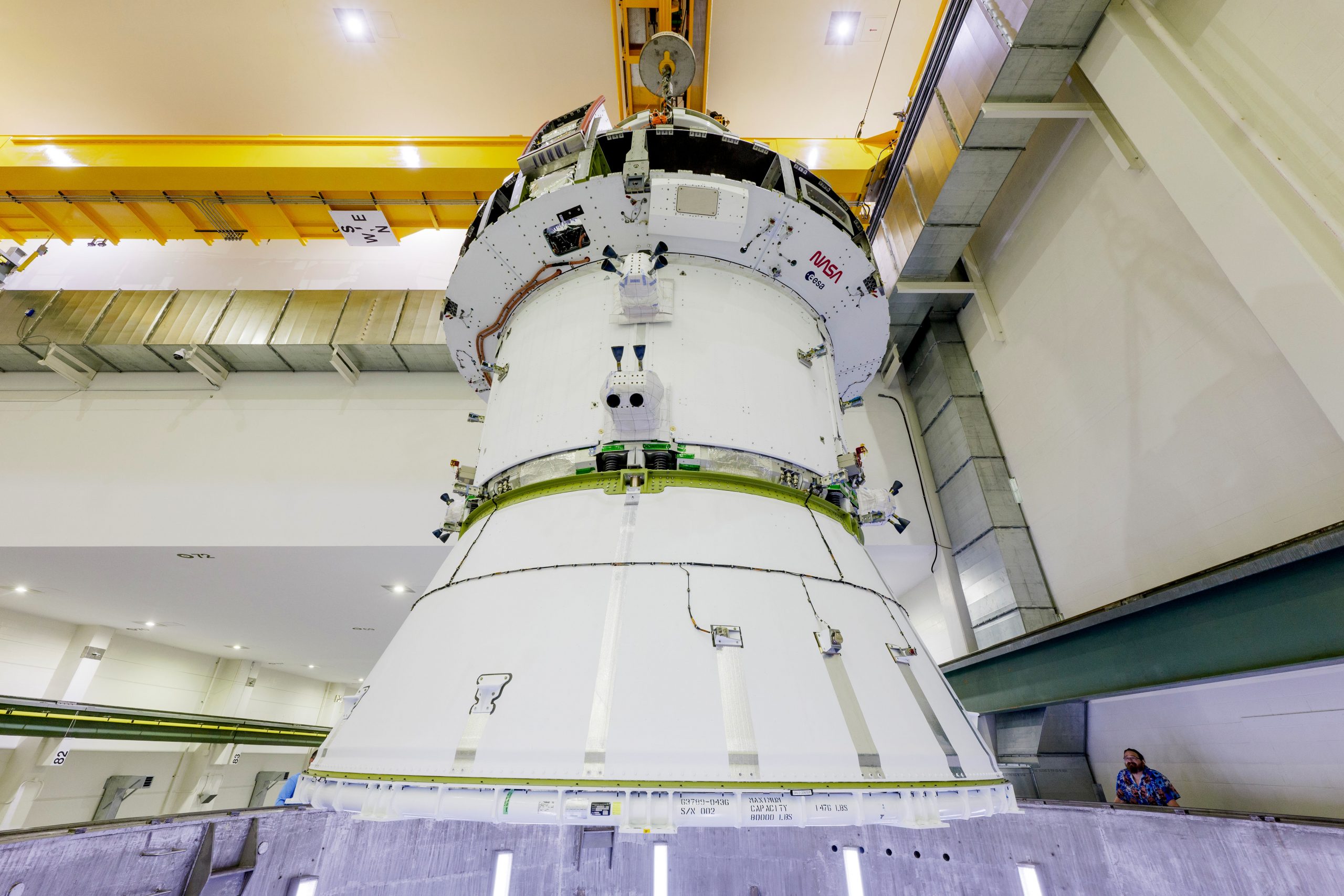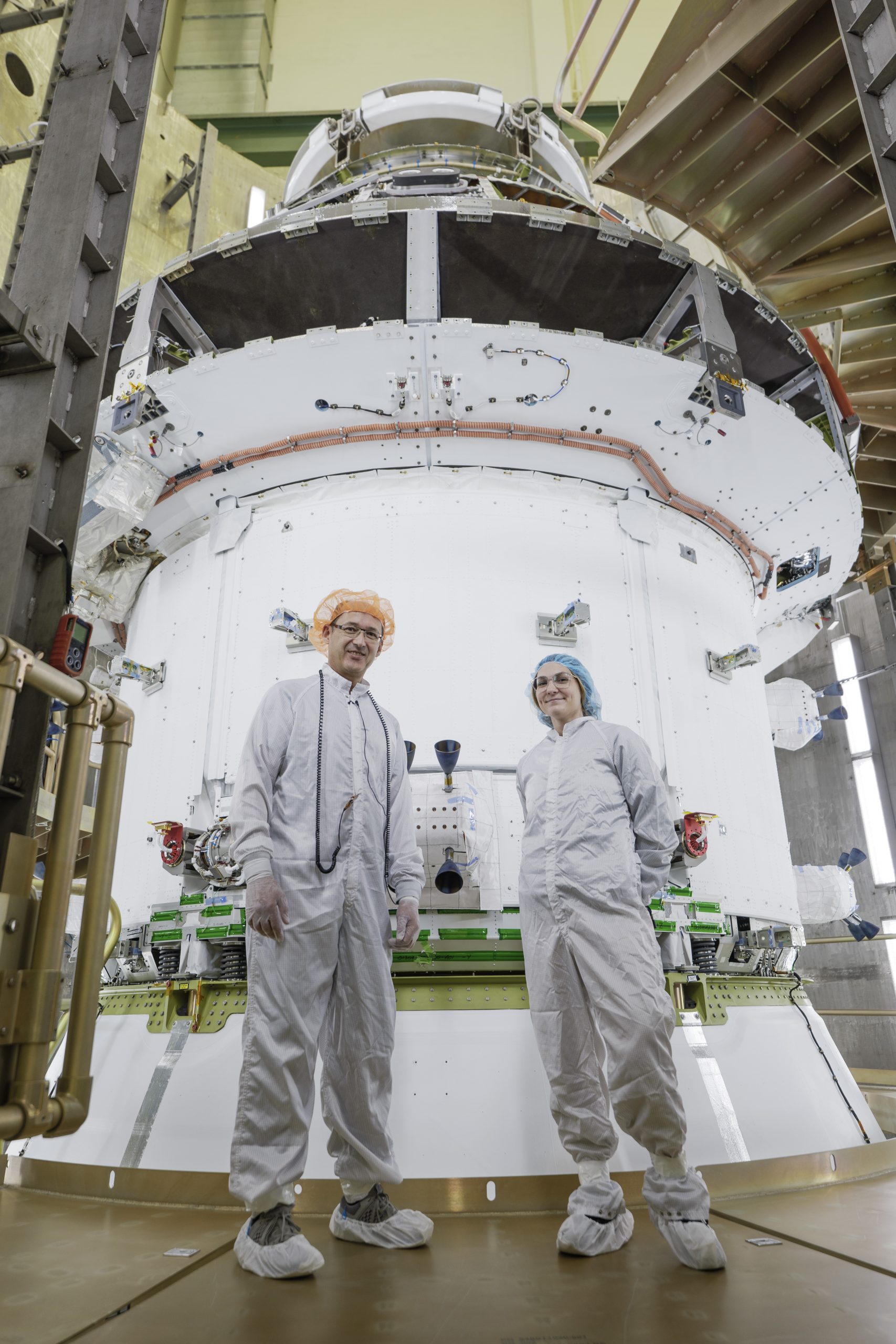The Orion vehicle that will bring astronauts around the Moon and back for the first time in over 50 years was recently tested in a refurbished altitude chamber used during the Apollo era.

The Artemis II Orion spacecraft was lifted from the Final Assembly and Testing (FAST) Cell and placed in the west altitude chamber inside the Operations and Checkout Building at NASA’S Kennedy Space Center in Florida on 28 June.
Credit: NASA-R. Sinyak
On 28 June, the integrated Orion spacecraft, made of the crew module, crew module adapter, the second European Service Module and spacecraft adapter, was lifted back into the same altitude chamber where it underwent electromagnetic testing a few weeks ago at the Neil Armstrong Operations and Checkout Building at the Kennedy Space Center in Florida.

Inside the altitude chamber, the spacecraft underwent a series of tests simulating deep space vacuum conditions.
Credit: NASA-R. Sinyak
This time, engineers tested Orion in a near-vacuum environment designed to simulate the space conditions the vehicle will travel through during its mission towards the Moon. Teams emptied the altitude chamber of air, a process taking up to a day, to create a very low-pressure environment over 2000 times lower and more vacuum-like than inside your vacuum cleaner.

The Artemis II Orion spacecraft being lifted into the west altitude chamber.
Credit: NASA-R. Sinyak
Orion remained in the altitude chamber’s low-pressure environment for around a week, with engineering teams monitoring the spacecraft’s systems and collecting data to qualify Orion for safely flying the Artemis II crew through the harsh environment of space. The crew module cabin as well as the crew’s spacesuits were tested, ensuring these can withstand changes in pressure. Once testing was completed, engineering teams repressurised the altitude chamber – this process is much faster than emptying the chamber – and conducted a post-vacuum performance check to make sure that nothing was damaged during the test.

Rachid Amekrane from Airbus and Erika Peters from NASA in front of the Artemis II Orion spacecraft.
Credit: NASA-R. Sinyak
The next step for Orion will take place after the summer: the installation of its four, seven-metre long solar arrays that the European Service Module will use to power the vehicle and its crew of four towards the Moon and back.

 Automated Transfer Vehicle page
Automated Transfer Vehicle page ATV blog archive
ATV blog archive
Discussion: no comments